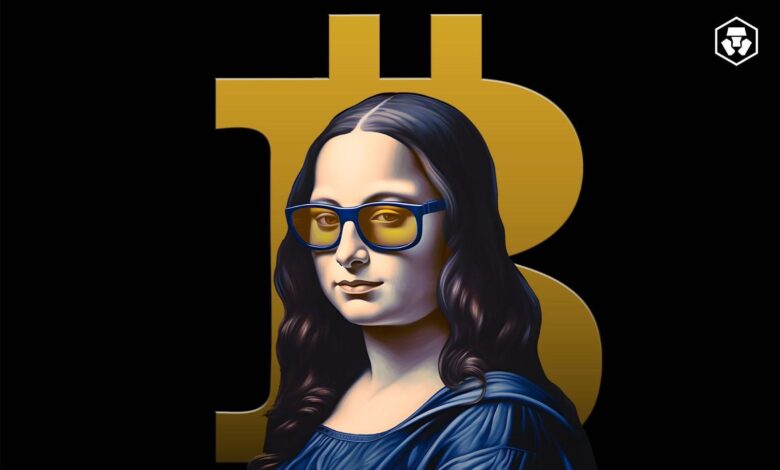The New Era of Digital Art: Key Transformations Shaping the Future

Digital artwork has gone through a thorough transformation in contemporary years, fueled through manner of rapid technological improvements and evolving cultural trends. These adjustments have now not nice stimulated the way paintings are created and consumed however have additionally elevated the horizons for artists and artwork enthusiasts internationally. In this text, we delve into the four maximum crucial traits that have redefined the landscape of digital artwork.
NFTs: Revolutionizing Digital Ownership and Monetization of “Intellectual Property
The introduction of NFTs has redefined virtual ownership, commencing new sales streams for artists. NFTs represent unique digital property authenticated through blockchain technology, making sure of their originality and possession. This innovation permits virtual artists to without delay promote their creations to collectors, without frequently fetching huge fees.
The upward thrust of NFTs has democratized access to the artwork market, permitting many artists who may not have had traditional gallery examples to achieve international audiences. However, it has also ignited debates regarding environmental concerns due to the strong consumption of blockchain technology, in addition to the speculative nature of the NFT market. Despite the controversies, NFTs have undeniably reshaped the perception and price of virtual artwork, making it a possible and useful career path for lots of artists.
Cutting-edge digital Art Tools and Software
The evolution of virtual art equipment and software program programs has extensively impacted the creative strategies of artists. Advanced drawing drugs, styluses, and powerful software like Adobe Photoshop, Corel Painter, and Procreate have turned out to be increasingly available, providing artists with a widespread array of gear to supply their visions to existence. These digital equipment provide features along with customizable brushes, layers, and advanced editing capabilities that a long way exceed what conventional mediums can provide.
Additionally, non-stop updates and new software program releases are pushing the boundaries of what’s possible in virtual artwork. For instance, 3-D modeling software like Blender has received a reputation for enabling artists to create mainly specific three-dimensional artworks. The integration of virtual truth (VR) and augmented fact (AR) into digital artwork has similarly stepped forward the scope for immersive opinions, and difficult conventional definitions of what artwork can be.
The Rise of AI and Online Tools in Image Editing
One of the maximum transformative shifts in virtual artwork has been the evolution of photograph editing, largely driven by advancements in synthetic intelligence (AI) and the boom of online equipment. AI-powered modifying software programs can now perform complicated obligations along with history removal, color correction, or maybe style transfer with wonderful tempo and accuracy. This development has democratized the enhancing method, making it available to all of us with an internet connection.
Image editing software like Adobe Express offers consumer-pleasant interfaces and a wide range of templates and presets, simplifying the improving gadget. These gear empower beginners and non-experts to create fantastic digital artwork without requiring massive technical skills. Moreover, AI algorithms are capable of producing art from textual descriptions or statistics inputs, growing innovative opportunities, and provoking new varieties of digital expression.
However, the mixing of AI in artwork will increase critical questions on originality and the location of the artist. While AI can mimic patterns and generate new works, the human touch and progressive goal remain irreplaceable factors of the ingenious way. The undertaking lies in balancing using AI as a device at the same time as maintaining the authenticity of human creativity.
The Expansion of Online Art Communities and Platforms
The digital generation has given rise to colorful online artwork agencies and systems, offering artists fantastic possibilities for collaboration, networking, and publicity. Websites like DeviantArt, ArtStation, and Behance have emerged as vital hubs in which artists can exhibit their work, connect to friends, and collect constructive remarks. These structures additionally assist artwork fanatics, collectors, and curators find out new competencies and discover several styles and mediums.
Social media systems like Instagram and TikTok have in addition amplified the attain of virtual artists, letting them assemble personal producers and engage right away with their target market. These structures are first-rate for sharing artistic endeavors, time-lapse movies, and in the back-of-the-scenes insights into the modern method. This direct engagement has enabled artists to construct reliable followings, stable commissions, and take part in collaborations.
Conclusion: A Dynamic Future for Digital Art
International virtual artwork has experienced super adjustments in contemporary years, driven using the use of technological improvements and transferring cultural dynamics. From the explosion of NFTs and AI-powered enhancing systems to the increase of online artwork communities, those trends have revolutionized how artwork is created, shared, and valued. As digital art continues to conform, it ensures to offer even greater exciting opportunities for both artists and audiences, shaping a dynamic destiny for the paintings.
